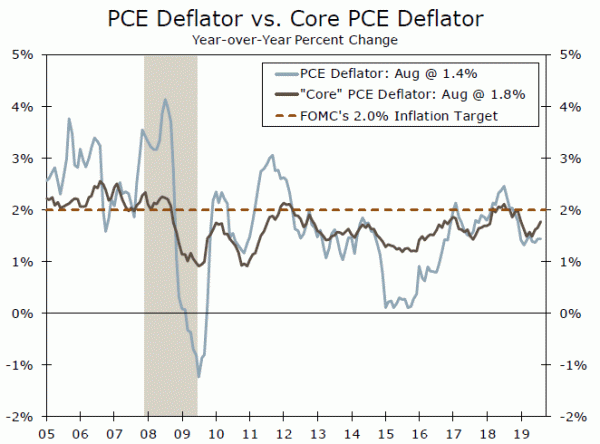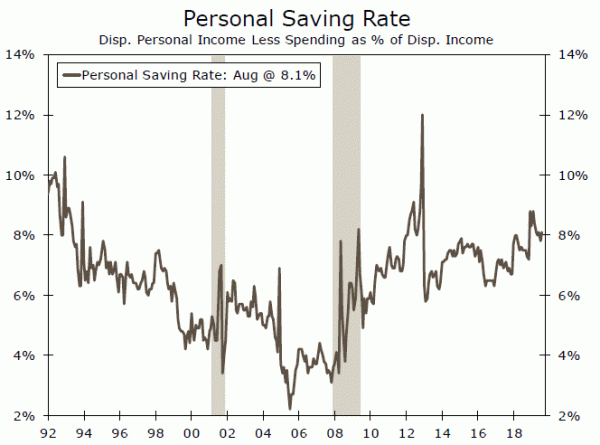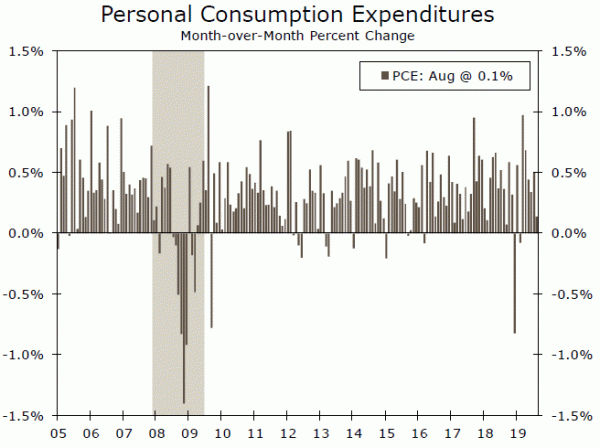The modest read on personal spending and downward revisions to previous estimates set PCE up for a sub-3% print in Q3. Consumer fundamentals are still strong, but increased caution will dampen spending.
The Tale of a Cautious Consumer
Personal spending rose only a tenth in August, which is the lowest gain since February. Previous spending estimates were also revised lower and, as we learned with yesterday’s third estimate of Q2 GDP, personal consumption expenditures (PCE) growth were revised down a tenth to 4.6%.
That is still a torrid Q2 pace of consumption and, as we have been cautioning, is not a pace that will be sustained. We still expect a strong quarter for consumer spending, but perhaps not as strong as we originally had anticipated. With two of the three months now on the books for the third quarter, PCE looks set to come in at a sub-3% annualized pace.
Slower spending in August was not held back by a lack of income, as consumers saw a nice 0.4% gain. Rising incomes were largely led by wages and salaries, which serves as the latest sign that the tight labor market is feeding into higher wages and labor costs. The personal saving rate rebounded to 8.1% after edging down in July, and perhaps demonstrates the more cautious nature of consumers in August.
Consumers could be spooked by the escalating trade war, but even with consumer goods coming under tariffs in the next few months, we expect the direct impact to the consumer to remain limited. It is the indirect hit to consumer confidence that is more worrisome, and we may have seen this caution in today’s report.
Consumer fundamentals remain in good shape, with household balance sheets broadly strong and borrowing costs manageable. Personal savings remains elevated, and perhaps more importantly, is at a historically high rate for this stage of the expansion. These details suggest consumers are in a position to spend, while factors that typically affect near-term spending are also pointing in the right direction. We saw a healthy pop in income growth in August, the stock market—while volatile—continues to move higher and the jobs market remains tight by most standards. But, confidence is a fickle thing, and if consumers get alarmed, it could curtail spending. Earlier this week, the Conference Board reported its consumer confidence measure plunged nine points in September. We get a final read on the University of Michigan’s survey of consumer sentiment later this morning. The two indices—which both seek to measure the degree of confidence among consumers—have diverged in recent months, making it increasingly difficult to gauge consumer behavior.
We still expect the Fed will cut rates in the fourth quarter, but squaring this soft read on the consumer and a slight rebound in underlying inflation admittedly pulls the Fed in opposite directions. The core PCE deflator rose only a tenth, but upward revisions to April-July helped nudge the year-overyear rate up to 1.8%. Inflation still appears to be firming on trend.
















